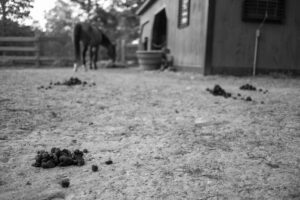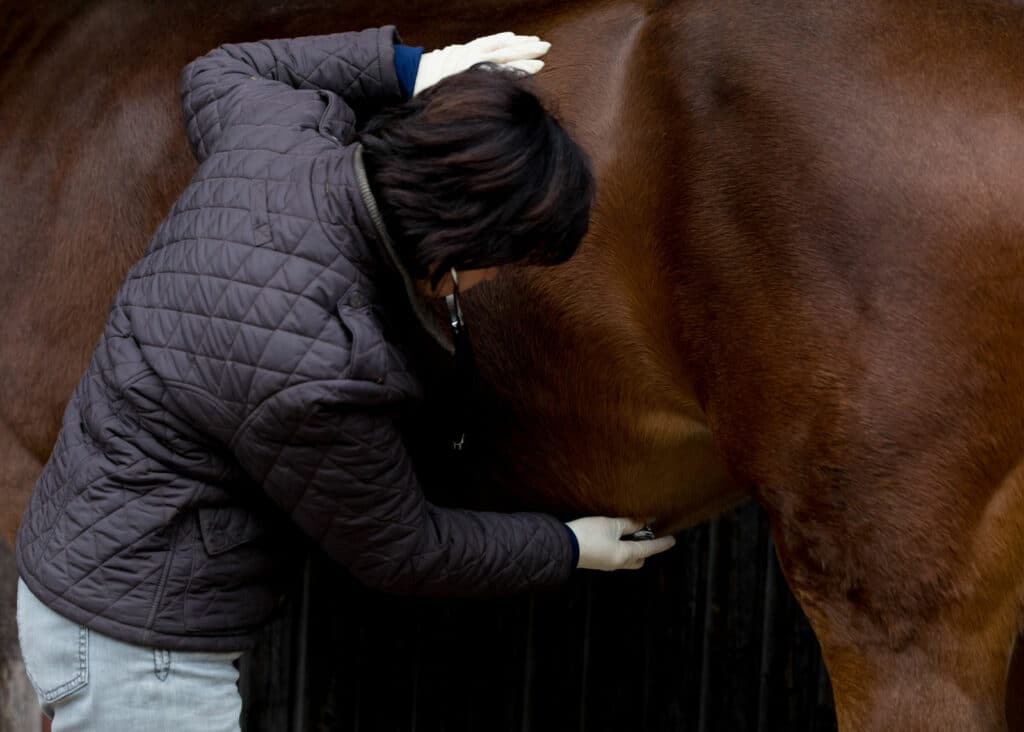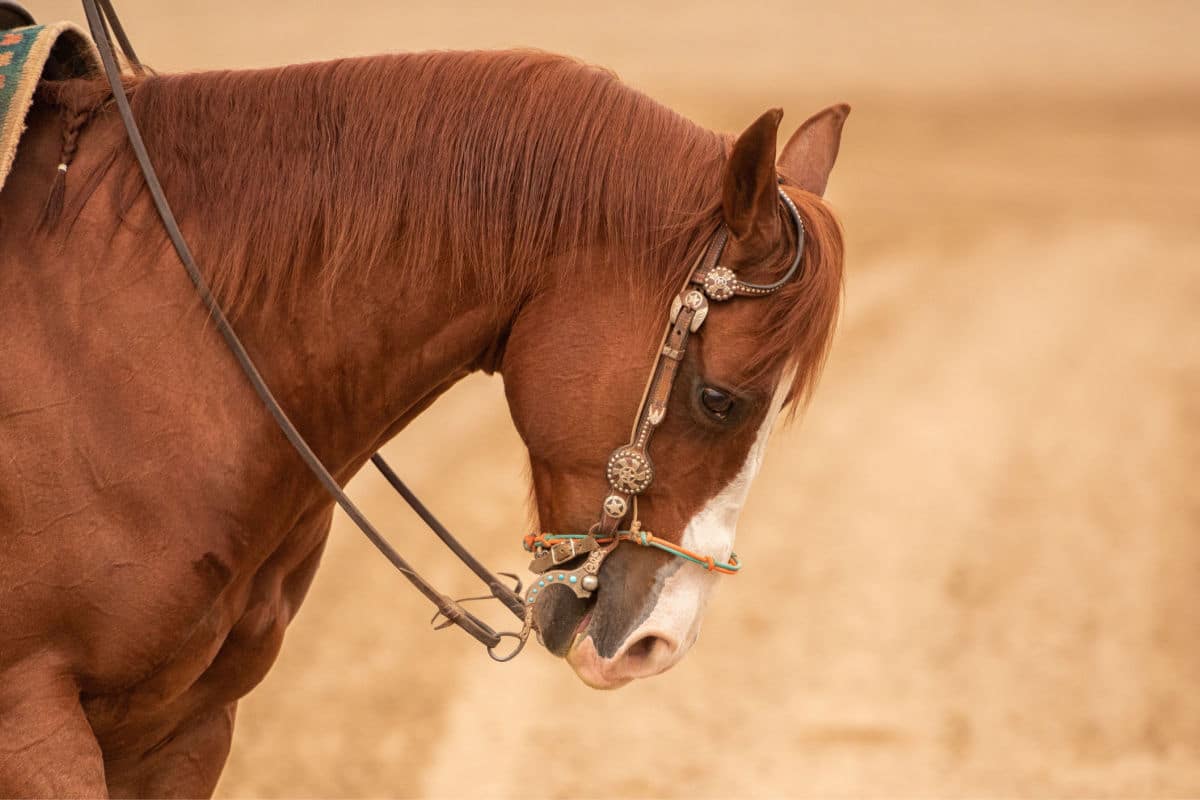 This is Pt. 6 of Parasites and the Equine Gut, a new series investigating the connection between parasite control and your horse’s digestive health — and what we can do to help.
This is Pt. 6 of Parasites and the Equine Gut, a new series investigating the connection between parasite control and your horse’s digestive health — and what we can do to help.
Over the past five posts in this series, we’ve looked in depth at some
health problems caused by parasites, including the impact parasites can have on your horse’s ability to
absorb nutrients, the connection between
parasites and anemia, how
parasites can cause ulcers, as well as why all of this
may lead to colic.
In short, parasites are still a huge problem for horses — in part because most of us have been using outdated worming practices. But there is some good news: new methods of testing and monitoring your horse’s parasite load are now more effective than ever. In this sixth and final post in our series on Parasites and the Equine Gut, we’ll be talking about how to work with your vet to set up a better parasite control program that will lead to a healthier horse.
Goals of Better Parasite Control in Horses
Before starting a treatment plan, you need to understand your end goal. And guess what? Contrary to earlier beliefs, the goal isn’t to completely eradicate parasites from your herd. Not only is that impossible, it’s also ill advised, as it will just
cause dewormer resistance to develop faster.
Instead, you want to carefully monitor your horses so you can time your treatments to have the best effect.
Diagnosing and Monitoring Parasites in Horses
It is possible to monitor parasites visually — to some extent. Yes, you can diagnose a parasitic infection when you see worms in a horse’s manure. It’s also true that a too-skinny horse with a rough coat and a rubbed tail from
scratching at pinworm eggs is probably infected.
But according to the new guidelines from the American Association of Equine Practitioners, we need to take our deworming programs off of autopilot and take a closer look at the facts before treating. That means working closely with your vet to inform how and when you treat according to the parasite loads diagnosed — instead of relying on the calendar to tell you. This serves two purposes:
- It decreases the likelihood that horses will develop a resistance to deworming medications by treating only when necessary.
- It helps you identify horses that harbor large loads of parasites so you can treat them effectively — and stop them from shedding large numbers of parasites and infecting others in your herd.
And remember that every horse should be tested and treated as an individual. Here’s where to start.
Fecal Egg Count Reduction Test — Start Here
The AAEP recommends starting with the Fecal Egg Count Reduction Test (FECRT). A high FECRT — about 500 eggs or more per gram of feces — indicates a significant parasite load. This test should be performed again 10-14 days after a horse has been treated, and the numbers compared. If the egg count is significantly lower following treatment, your dewormer is doing its job. If the numbers don’t change much, you may need to adjust your strategy. Know that tapeworms and pinworms may not be accurately counted, as tapeworms only shed intermittently and pinworm eggs adhere around the anus and are not necessarily passed through manure.
Periodically Monitor the Egg Reappearance Period
If the before and after treatment fecal egg counts indicate that your dewormer is doing its job, great! Now you need to know how long that dewormer is working for your horse. That’s done by periodically monitoring the egg reappearance period (ERP), or the time between the last effective treatment and a new appearance of strongyle egg shedding. The ERP is determined by taking weekly FECRTs until eggs reappear. Monitoring this number is valuable, because it helps you know when a particular dewormer is losing efficacy, as the ERP will be shorter.
Treat and Prevent with Horse Dewormer
Once you’ve determined the severity of your horse’s parasitic infection, it’s time to work with your vet to determine a deworming schedule that’s appropriate for your barn and your climate. The
AAEP guidelines suggest focusing on the control of small strongyles, as they are the most prevalent, but your vet will also help you develop a plan for large strongyles (usually once or twice yearly), and one for bot flies and tapeworms. He or she can help you implement a treatment that targets parasites during their larval stages, when they’re most prone to contaminate your horse’s pasture with high numbers of eggs and larvae.
Environmental Control of Equine Parasites
Weather can be a significant tool in your campaign to control parasites. Cold weather slows (or stops) the development of parasite eggs, and excessive heat kills eggs and larvae. For this reason, you should focus anthelmintic treatments on the time of year that’s optimal for larvae (mild temperatures) to reduce the development of dewormer resistance.
Since larvae can’t thrive in extremely hot temperatures, it’s important to properly compost manure piles so the internal temperature is high enough to kill larvae and eggs inside. And never spread non-composted manure on pastures, as it will also spread parasites.
Winning the War Against Parasites in Horses
Proper control of parasites is a year-round commitment that should be tailored to each horse in the herd. Unlike the old days, when we thought each horse should get wormed every few months whether he needed it or not, we now know that there is no “one-size-fits-all” parasite plan.
Each treatment should be tailored to your horse, and will vary from horse to horse. Working closely with your vet is key, as he or she will be able to recommend the specific dosage and schedule to target the parasites that are a problem. And even if taking your parasite routine off of autopilot seems like a pain, know that it’s worth it to do all we can possibly do as horse owners to keep our horses healthy and comfortable.
Photo by Roger H. Goun licensed under CC2.0
 This is Pt. 6 of Parasites and the Equine Gut, a new series investigating the connection between parasite control and your horse’s digestive health — and what we can do to help.
Over the past five posts in this series, we’ve looked in depth at some health problems caused by parasites, including the impact parasites can have on your horse’s ability to absorb nutrients, the connection between parasites and anemia, how parasites can cause ulcers, as well as why all of this may lead to colic.
In short, parasites are still a huge problem for horses — in part because most of us have been using outdated worming practices. But there is some good news: new methods of testing and monitoring your horse’s parasite load are now more effective than ever. In this sixth and final post in our series on Parasites and the Equine Gut, we’ll be talking about how to work with your vet to set up a better parasite control program that will lead to a healthier horse.
This is Pt. 6 of Parasites and the Equine Gut, a new series investigating the connection between parasite control and your horse’s digestive health — and what we can do to help.
Over the past five posts in this series, we’ve looked in depth at some health problems caused by parasites, including the impact parasites can have on your horse’s ability to absorb nutrients, the connection between parasites and anemia, how parasites can cause ulcers, as well as why all of this may lead to colic.
In short, parasites are still a huge problem for horses — in part because most of us have been using outdated worming practices. But there is some good news: new methods of testing and monitoring your horse’s parasite load are now more effective than ever. In this sixth and final post in our series on Parasites and the Equine Gut, we’ll be talking about how to work with your vet to set up a better parasite control program that will lead to a healthier horse.



